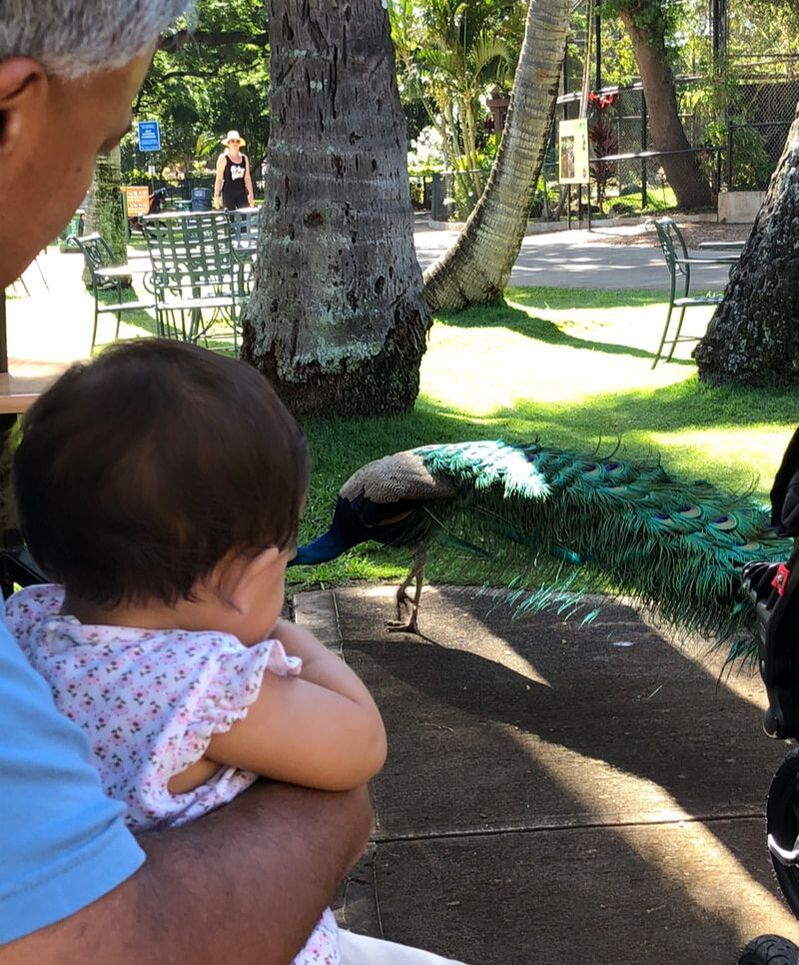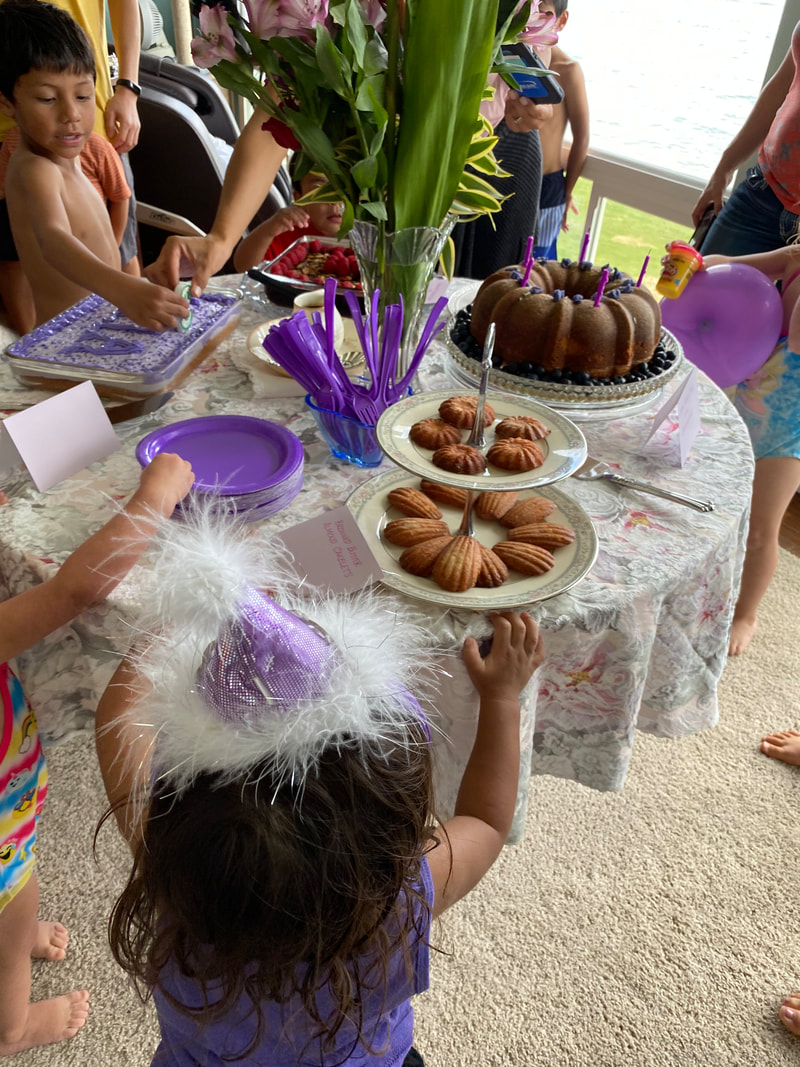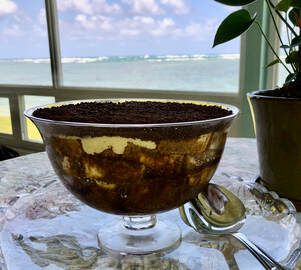So much happens in May--
Our heads spin, our breath catches, and dizziness takes control,
Like dancing the May Pole
Or trying to watch seven canaries and
Two yellow butterflies hover at once in the sweet breeze.
It’s a delicious overdose--
Crowds of crows call out in the leafy oaks,
Cottonwood seeds float, as mallards and egrets take flight.
Doves in dappled sunlight and shade move across the moss
And pause in the pink rose perfume.
Over on the coast, gulls fly in a V, white light on their wings,
Wildflowers cling to the cliffs, and pelicans soar
As the soft fog rolls in.
We inhale it all, lifting up our hearts in gratitude
For the wings of spring.
By the time May arrives, the natural world is as beautiful as it can possibly be. Whether we look up or down, there will be something magnificent to behold.
Children know this, and they are eager to explore all the sounds, sights and smells of the warm days of May.
In May this year, because of the corona virus pandemic, thousands of children have already been out of school for many weeks, and a long summer looms ahead. Meanwhile, parents are at their wits’ end trying to home school their children while coping with working from home, managing limited finances or even unemployment. During times of stress and worry, Afternoon Tea comes to the rescue.
No matter what is going on in the world around them, children are always eager to learn. Afternoon Tea can provide a delightful experiential learning adventure for children of every age, from toddlers to teens on the brink of young adulthood. Older children and teens can read our entire website: myteaplanner.com, where they will learn all about the ancient tea traditions throughout the world, how to host a tea gathering, including the basics of etiquette, all of the equipment used for tea parties, international and regional foods, and organizing and planning events in harmony with the seasons of the year. I think children would even enjoy reading the Glossary, which I certainly enjoyed writing, where they will learn the names and descriptions of all kinds of foods and food related items, information that will be useful to them for the rest of their lives.
We also offer a “Tea Party for Children “in the Afternoon Tea for Special Occasions” section of the website. This chapter is actually a gift for parents, as it provides not just a simple menu that has actually been tested out on children, but all of the recipes as well as resources that will help adults organize the event while still empowering the children to participate fully in the food preparation and enjoyment of this special occasion. These resources include an Implementation Plan and Timeline, complete with a Grocery List of all of the ingredients needed to create the menu. The Timeline will help parents manage their own precious time during the planning process and avoid chaos when the children assist with the party. The Implementation Plan also includes a separate list of tasks for the adult and for the children.
For parents of younger children, this chapter also includes ideas for “An Imaginary Tea for Toddlers,” which assists parents in introducing very young children to Afternoon Tea. This is actually a play time activity which will nurture the children’s imaginations and creativity. All of these resources can be yours for a download of $1.99—quite a bargain compared to what parents usually spend on their children’s educational activities and entertainment. Furthermore, since Kathleen and I created our website as an oasis of serenity for our readers, you will never be annoyed by an advertisement or a pop-up on myteaplanner.com.
Keeping in mind that my co-author, Kathleen, has been hosting tea parties since she was in elementary school, I believe that teenagers are perfectly capable of planning and hosting Afternoon Tea by themselves. Since their parents and teachers are still hoping to provide them with at-home educational opportunities, planning and creating an Afternoon Tea gathering for a small group of family members could become a “Project-Based Learning Strategy,” to use a bit of educational jargon. Teens who normally attend parochial or other private schools might complete their “Service Learning” requirement by hosting a tea party for an elderly relative or neighbor living nearby.
It is my hope that teens will approach Afternoon Tea as an altruistic activity in which everyone who participates brings his or her best self to the occasion. The lives of teenagers today are filled with stress, anxiety, peer pressure, fear and competition, and sadly, “mean girls” and bullies can be found on every high school campus and in every movie that features teenagers. These are not the elements of Afternoon Tea. As the “Philosophy of Tea” chapter of our website points out, the components of Afternoon Tea are: Harmony, Humility, Respect and Creativity. The “Guidelines for the Host or Hostess” and “Guidelines for the Guest” chapters provide specific examples of these foundational principles, gently guiding all who participate in Afternoon Tea onto the high road, the Road Back to Civilization.

Once teenagers have read “The Tea Book” section of our website and have a clear grasp of the Philosophy of Tea, they can plan an Afternoon Tea on their own. Teens who have an interest in history will be aware of the importance of China, Japan, Portugal and England in developing the early traditions of the Tea Ceremony. The “World of Tea Parties” chapter will introduce them to these historic traditions as well as other international and regional tea customs. Keeping in mind the season of the year, the teen will need to determine the purpose or occasion for the gathering and the guest of honor, if there is one. The “Afternoon Tea for Special Occasions “chapter will provide plenty of ideas, but young people can come up with themes of their own, such as exploring their own family’s genealogy through Afternoon Tea.
The theme or occasion will guide the menu, including the selection of appropriate beverages, savories, sandwiches, scones or breads and sweets for the event. “The Tea Menu Basics” chapter will be a helpful resource, as it contains free recipes for making all of the traditional tea party foods familiar to the English-speaking world. At this point in the planning process, the “Checklist for Planning a Tea Party” will be invaluable. And if this teenager-produced tea party is indeed an experiential learning project supervised by a teacher or parent, the Checklist can be the first step in the assignment, equivalent to the outline for a research paper. This document is very comprehensive and can help novice tea party hosts avoid overlooking key details necessary for the success of the event.
Since “Collaborative Learning” is an important component of educational theory today, this project would work well as a small group cooperative endeavor. And the Checklist can help the team divide up the assigned tasks. Individual team members can be responsible for the decorations, table settings, flower arrangements, invitations, menu development, food preparation, and so on. I encourage teens to reach out to adult family members, friends and especially grandparents, for consultation and advice and for permission to borrow linens, dishes and serving pieces, which they will of course return cleaned and in good condition. Budgeting is another component of planning a Tea Party, and a learning opportunity for teens.
Finally, in my travels throughout the world where I have missed no opportunity to experience Afternoon Tea reflective of the local culture, it has become clear to me that enjoying tea is for everyone. Since we first started blogging in June of 2016, Kathleen and I have included men and women in our tea-related activities. All of our blogs are on-line, and all are welcome to mine them for recipes and ideas for entertainment. You will see that Afternoon Tea is not just for ladies who wear hats, although teens are welcome to choose a formal or informal ambience for their event. Men and boys everywhere on earth enjoy sharing snacks and tea in the afternoon as much as women do. We all crave good food and companionship in a safe environment where nothing unkind will occur.
Mother’s Day is May 10 this year, and mothers are more in need of loving appreciation than ever. Nothing could make a mother happier than a tea party in her honor hosted by her own children. The “Mother’s Day Tea” on this website features an elegant traditional British style menu that would make any mother feel loved. This menu could serve as a starting place for children or teens who want to develop their own menu based on their mother’s interests and personal tastes. Our “Mother’s Day Tea” menu features The Queen’s Shortbread, a classic favorite that is easy to make and would be welcome at any tea party.
Trifles are also beautiful and festive desserts that make any gathering memorable, and they are fun and easy to assemble in every season. Several Trifles are available on our website and our recent blogs, including Kathleen’s blog for April 2020 featuring her gorgeous strawberry TiramiSuzi and my March 2020 blog. This blog, “A Blue and White Tea,” describes a Blueberry Trifle with Almond Biscotti. To make this very decorative Trifle or indeed any trifle, the young cook needs to learn how to make Homemade Vanilla Custard. Like Shortbread, Custard is one of the tea party staples that elevates tea parties year-round.
To help girls and boys everywhere enter the world of Afternoon Tea with confidence, I offer two basic and simple recipes to which young cooks will turn again and again as they explore the mysteries of Afternoon Tea in the years ahead: Vanilla Custard and Home-Made Whipped Cream. No one ever needs to use “Whipped Topping,” from a plastic tub, which is not Whipped Cream, ever again. Home-Made Whipped Cream is fresh and natural, needs no preservatives or additives, and can be made quickly just before it is needed for your special tea party. You will find the simple procedure for making Home-Made Whipped Cream embedded in the “Chocolate Almond Torte” recipe in my April 2019 blog, “Splendid Spring.”
The recipe for Vanilla Custard appears in several of the menus on myteaplanner.com, as it is an essential component in many classic desserts, from puddings to trifles to pies and cakes. Vanilla Custard forms the basis for Vanilla Custard with Sliced Bananas and Vanilla Wafers, the featured dessert in our “An Afternoon Tea for Children” menu. In traditional Victorian style teas, this luscious custard is used to fill golden sponge cake layers to create Queen Victoria’s favorite, Victoria Sponge. This custard, which tastes so much better than pudding out of a box, can be used as a pie filling for Banana Cream or Coconut Cream pies, or served individually in small bowls with fresh fruit, berries, granola or chocolate chips. In South Africa, warm Vanilla Custard is served with cakes and pies as ice cream is served in America. As an extra bonus for young cooks who are learning to avoid being wasteful with precious ingredients, I have included the easy recipe for Chocolate Meringue Cookies, which will use the six egg whites that are not needed to make the Vanilla Custard.
- 6 egg yolks
- 1 cup sugar
- ½ cup flour
- 2 cups whole milk or half and half
- 2 tablespoons butter
- 2 teaspoons pure vanilla extract
Makes: 8 servings, ½ cup each, or 1 large trifle, or filling for a layer cake, such as Victoria Sponge
- Pour the milk (or half and half) into a large glass measuring cup and microwave until the milk boils. Watch carefully to make sure it does not boil over. Set aside.
- In a medium sized mixing bowl with an electric mixer, beat the egg yolks lightly, and gradually beat in the sugar. Continue beating until the mixture forms a pale yellow, slowly dissolving ribbon when the beaters are lifted, about 4 minutes.
- Beat in the flour. Gradually add the hot milk, beating constantly on low speed to avoid splashing.
- Using a rubber spatula, transfer the mixture to a medium sized saucepan, and cook over medium heat, whisking constantly with a wire whisk or immersion blender. This step will require patience, as it will take several minutes for the custard to come to a boil, and the cook must be very attentive and keep whisking to prevent the mixture from burning.
- When the custard boils, lower the heat and continue cooking for several more minutes, whisking vigorously until the mixture becomes very thick.
- Remove from the heat and add the butter and vanilla, stirring with a rubber spatula until the butter melts. Pour the mixture into another medium sized bowl and cover the top immediately, directly on the custard, with plastic wrap to prevent a skin from forming. Cool to room temperature and chill. Custard can be made two days in advance and refrigerated.
These delightful pillowy little cookies, crunchy on the outside and soft in the middle, appear in the “Christmas Tea” menu of our website. You can create them easily whenever you are making Vanilla Custard, as both recipes require 6 eggs—the yolks for the custard and the whites for the Meringue Cookies. They will be appreciated on any tea table, and you can make them the evening before your party and leave them in the oven overnight.
- 6 egg whites
- 1 cup granulated sugar
- ½ cup powdered sugar
- 1 cup mini chocolate chips
Special equipment: large mixing bowl, hand-held electric mixer, rubber spatula, tablespoon, 2 foil-lined cookie sheets, two-tiered server or decorative serving platter.
Makes: approximately 2 dozen Meringue Cookies
Preheat oven to 200 degrees F
- Preheat the oven to 200 degrees and cover 2 baking sheets with aluminum foil. Set aside.
- Place the egg whites in a large mixing bowl and beat at high speed until they start to turn white and foamy.
- Slowly add the granulated and powdered sugars and continue to beat for 10 minutes until the mixture is white and thick and stiff peaks form when the beaters are lifted.
- Gently fold in the mini chocolate chips. Using a 1-tablespoon measure, drop small round piles of meringue onto the cookie sheets, swirling the tops if you wish, about 1 inch apart, until all of the meringue has been used.
- Bake for approximately 2 hours at low temperature in the pre-heated oven. When the cookies are just slightly browned, turn off the oven and leave them in the oven overnight. When ready to serve, place on a two-tiered server or decorative platter in a single layer or store for 1-2 days in a metal box between sheets of waxed paper.


















 RSS Feed
RSS Feed